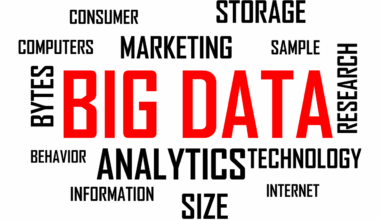Credit Risk Assessment Tools: Selecting the Right Software
Credit risk assessment is essential in today’s financial landscape. Choosing the right tools can significantly impact the efficiency of your assessments and decision-making processes. A good software solution should offer comprehensive insights into potential risks associated with lending. This includes a thorough analysis of borrowers’ credit history, financial stability, and repayment capabilities. Ideally, the software should automate complex calculations, allowing users to focus on strategy and policy implementation. It’s crucial that businesses consider various factors when selecting a software option, including user-friendliness and integration capabilities with other platforms. Furthermore, training and customer support provided by the vendor are fundamental, as they can determine how successfully the software is adopted within your organization. Finally, compliance with regulatory standards is mandatory, ensuring that the tool adheres to the latest guidelines in credit management. By selecting the most suitable credit risk assessment software, organizations can effectively mitigate risks and improve their overall finance management strategies, ultimately leading to enhanced profitability and stability.
When exploring the broad range of credit risk assessment tools available, businesses must prioritize functionality. Look for software that combines advanced analytics with real-time data to ensure informed decision-making. Critical components include predictive modeling and risk scoring, which provide insights into current and prospective borrowers. Additionally, a user-friendly interface can be a game changer, making it easier for users at all levels of tech-savviness to navigate through complex data sets. Software that is easily customizable also allows organizations to tailor the analysis processes to suit their unique needs and objectives. Moreover, ensure that your chosen tool can seamlessly integrate with existing systems to enhance efficiency and avoid data silos. This compatibility helps in developing a holistic view of risk in conjunction with other financial data. Furthermore, regular updates and technological advancement are crucial in maintaining accurate assessments against evolving market conditions. Therefore, it is advisable to engage potential software vendors comprehensively to understand their upgrade plans. A proactive stance enables organizations to safeguard against emerging financial threats while capitalizing on new opportunities presented.
Understanding Software Features
Effective credit risk assessment tools should come equipped with specific features tailored for assessing risk. Firstly, machine learning algorithms can significantly enhance predictive capabilities by learning from historical data trends and adapting accordingly. This technology reduces human error and increases the accuracy of risk evaluations. Another critical feature is scenario analysis, allowing organizations to test various economic conditions and their potential impact on borrowers’ abilities to repay loans. Credit scoring models are another essential component that can automate the analysis process. These models assess multiple factors, including payment histories and credit utilization ratios, to provide a nuanced view of borrower risk. It’s also essential to ensure that the software can generate reports that are easy to interpret for stakeholders involved in making lending decisions. Such functionality facilitates better communication of risks identified through assessments. Finally, data visualization is another key aspect; having graphs and interactive dashboards can simplify complex data sets for clearer understanding. By ensuring your tool integrates these features, you can maximize its effectiveness in credit risk assessment.
Another significant factor in implementing credit risk assessment tools involves evaluating the data sources they utilize. High-quality data is the linchpin of effective credit assessments and risk management. Vendors should emphasize sourcing reliable external data such as financial reports, payment histories, and credit bureau information, enabling lenders to make well-informed decisions. Furthermore, continuously monitoring changes in borrowers’ financial condition helps to ensure that lending decisions remain appropriate over time. Offering industry comparisons can also be beneficial, providing context as to how a borrower ranks against their peers in similar sectors. In addition to tracking traditional metrics, consideration of alternative data sources is gaining traction. This includes social media engagement and payment histories for utilities or telecom services that can reveal additional facets of borrower behavior. Overall, the right combination of diverse and accurate data points is essential to enhance the robustness of any assessment tool. As credit landscapes evolve, lenders need to keep adapting and adjusting their strategies by leveraging comprehensive data sources. Thus, seeking tools that offer these extensive data integration capabilities is invaluable.
The Importance of Automation
Automation in credit risk assessment significantly increases efficiency while reducing human error. Manual calculations or assessments can lead to inconsistent results, unnecessary delays, and heightened risk levels. Technologies that enable systematic data collection and processing are essential for modern financial practices. Automating repetitive tasks within the credit risk evaluation process allows analysts to redirect their focus towards more strategic initiatives, ultimately enhancing productivity. Furthermore, tools that incorporate real-time models provide updated risk evaluations as new data enters the system, ensuring decisions are based on the latest information. For instance, adjustments in credit scores due to changes in the borrower’s financial situation can be analyzed instantaneously. This seamless integration of automation also supports regulatory compliance by maintaining accurate and detailed records of all assessments and decisions made. In addition, cloud-based solutions offer an advantage in maintaining data integrity while ensuring access from anywhere. Organizations can leverage automated systems not just for assessments but also for continual monitoring of risks. Ultimately, automation transforms the credit risk assessment landscape, enabling companies to manage risk more prudently.
In addition to automation, providing robust training on the selected software system enhances its successful implementation. Ensuring staff are well-versed in navigating the complexities of credit risk assessment tools builds confidence in the newly adopted systems and optimizes their usage. Many vendors offer initial training sessions to familiarize teams with the software, which can be complemented by ongoing education resources. Regular workshops or refresher courses on best practices help employees remain updated on upcoming features and techniques. Furthermore, fostering a culture of continuous improvement and proactive learning within the organization can expand team members’ capabilities, driving better risk management. Engaging specialists or consultants to assess your chosen software’s effectiveness can provide insightful feedback on how to maximize outcomes. Encouraging the sharing of experiences among team members can uncover tips and strategies for enhancing processes. Ultimately, training serves as a foundational element in ensuring that the investment in credit risk assessment tools yields substantial dividends. By prioritizing education, organizations can significantly mitigate financial risks and generate sustainable growth opportunities.
Evaluating Vendor Support
Vendor support is a critical aspect that organizations must consider during the software selection process. A strong support team can help navigate challenges and ensure the software is functioning optimally. Look for vendors that offer technical assistance and troubleshooting, particularly during the initial phases post-implementation. Service level agreements (SLAs) should clearly define response times to resolve issues and the availability of support channels, ensuring that help is accessible when needed. Explore whether vendors provide additional resources such as user manuals, instructional videos, and online forums, which facilitate users in finding quick solutions independently. Moreover, consider feedback from current users regarding their experiences with the vendor’s customer service. Engaging in detailed discussions about future updates and features with vendors is also beneficial. This dialogue can foster a better understanding of the direction the tool is taking and how it will evolve to meet your organization’s needs. In the rapidly changing financial landscape, aligning with a vendor that takes customer feedback seriously can greatly enhance the value of your selected credit risk management software.
As organizations embark on the journey of selecting the right credit risk assessment software, it is crucial to develop a well-informed, methodical approach. Regularly revisiting objectives and needs will provide clarity throughout the selection process. Utilizing a collaborative team to evaluate potential vendors can result in a more comprehensive understanding of requirements. Ensuring all stakeholders’ expectations are addressed enhances buy-in and the implementation process itself. Additionally, conducting pilot tests with shortlisted software can provide first-hand experience before finalizing any investments. Gathering feedback from users during these tests can illuminate essential features and areas needing attention. By prioritizing thorough evaluation and enabling user involvement, organizations can increase the chances of a successful rollout of credit risk assessment tools. Furthermore, staying abreast of technological advancements and market trends can help adapt strategies continuously. Ultimately, organizations that prioritize thoughtful selection and implementation processes will experience enhanced credit risk management capabilities, leading to greater financial stability and success. Choosing the ideal software tool is not merely an upgrade; it’s an opportunity to fortify decision-making and risk management practices.


